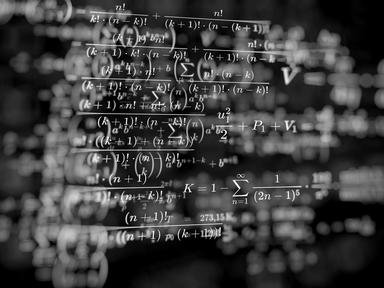Quiz Answer Key and Fun Facts
1. Without using a calculator or a pencil and paper, which of these is a perfect square?
2. What is the sum of the infinite series 1 + 0.5 + 0.25 + 0.125 + 0.0625 + ... ?
3. Let f(x) = 3x/2. Let g(x) = 2x + 3. What is f(g(f(g(f(g(f(2)))))))? Write your answer as a fraction, not a decimal.
4. An ant starts at the origin and moves one unit to the right, 1/2 unit up, 1/4 unit left, 1/8 unit down, 1/16 unit right, and so on. If it continues infinitely, on what point is it converging?
5. I am somewhere on earth. I go one mile south, one mile east, and one mile north and I am back where I started. Where must I be?
6. An easy one. Solve for x:
7x - 2 = 4x + 1
Write your answer as a number.
7. Another easy one:
Factor:
x^3 - y^3
8. What is the slope of the line tangent to the parabola f(x) = x^2 + 1 at x = 2?
9. Find the sum:
1 + 2 + 3 + 4 + 5 + ... + 100
10. What is the maximum number of regions into which 100 straight lines can divide a plane?
Source: Author
quotidiantrivia
This quiz was reviewed by FunTrivia editor
crisw before going online.
Any errors found in FunTrivia content are routinely corrected through our feedback system.


